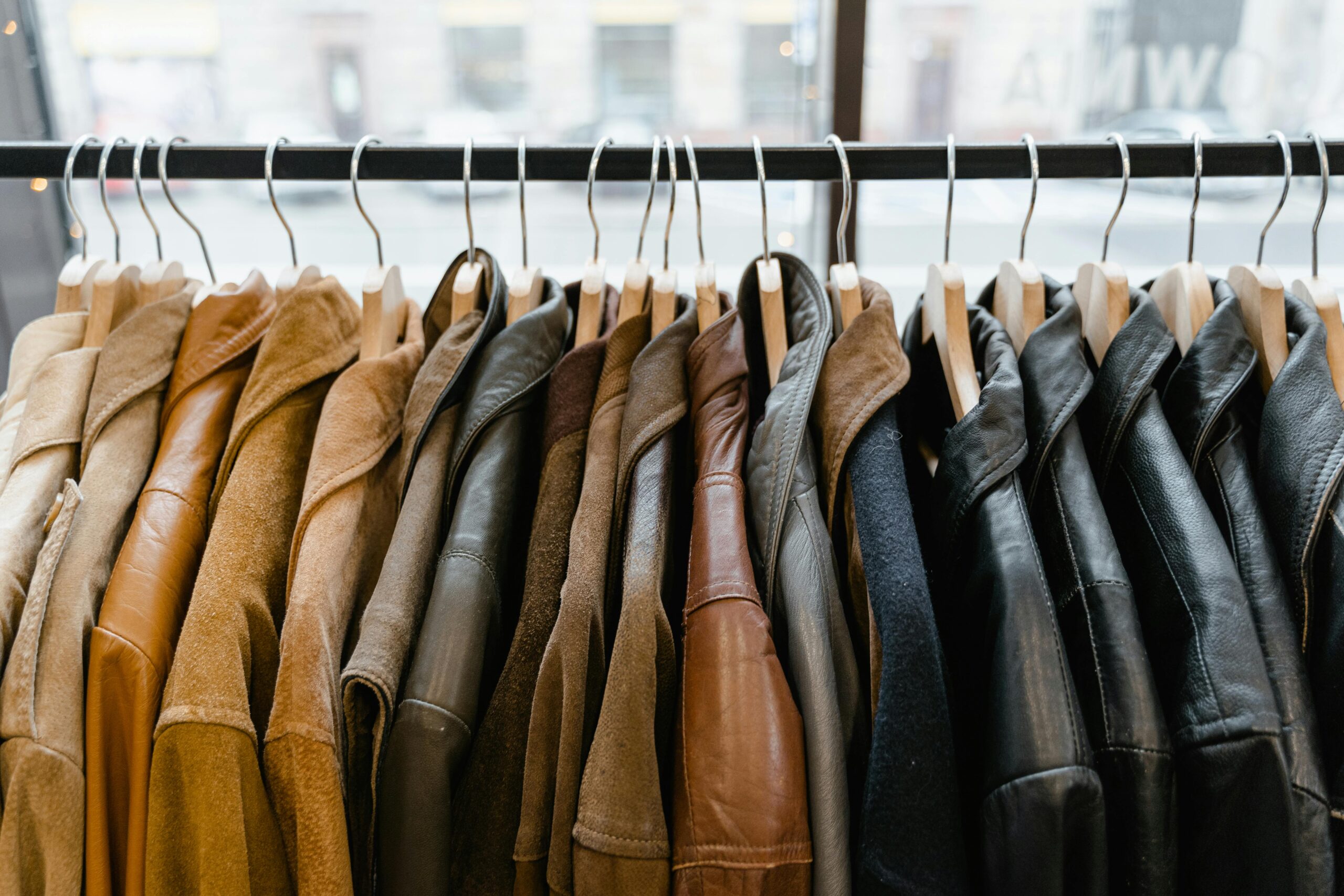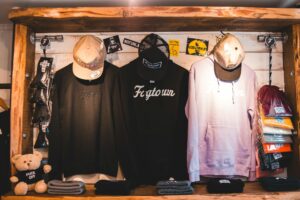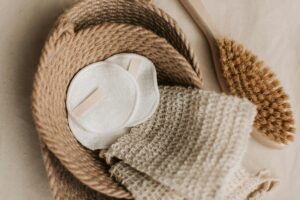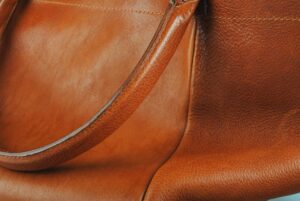What Vegan Leather Means for Jackets
Off what’s vegan leather? It’s any material that mimics leather while skipping animal hides. For jackets that means a fabric that holds up in everyday wear. We customize these for B2B clients emphasizing sourcing.
PU and PVC in Outerwear
When it comes to vegan leather jackets, polyurethane (PU) usually tops the list. It’s supple lets air pass through and generally stands up to water better than other options. PVC by contrast feels noticeably firmer. Is the budget-friendly choice. In our workshop we tend to go with PU for the bulk of custom pieces because it soaks up dye nicely and can take embroidery or prints without cracking.
[Experience Note] After years of hands-on production we’ve found that PU generally clings to its color after washes while PVC tends to lose its vibrancy more quickly under sun exposure. To guarantee quality we run rub-fastness tests using AATCC methods.
Plant Materials That Are Kind to the Planet
Plant-based alternatives are gaining momentum. Picture leather crafted from mushrooms or derived from extracts—both convey a premium feel and decompose far more gracefully than conventional synthetics. When we produce bespoke vegan leather jackets we draw on cactus-derived material like Desserto and fibers harvested from pineapple leaves. These choices score high on sustainability. We stay vigilant about substances ensuring full compliance with REACH standards to avoid any complications.
All trademarks are property of their respective owners. This article is informational and implies no affiliation or endorsement.
If you’re eyeing these for your line keep in mind that plant-derived materials often drive the MOQ higher because of the quirks in their supply chains. It’s prudent to license any patterns upfront so you can steer clear of trade-dress headaches.
Vegan Leather Materials Pros and Cons
| Material | Pros | Cons |
|---|---|---|
| PU | Soft, breathable, water-resistant | Can degrade in sun |
| PVC | Affordable, stiff texture | Less durable, color fades |
| Mushroom Leather | Premium feel, biodegradable | Softens in humidity |
| Cactus/Pineapple | Sustainable, flexible | Higher MOQ |
Built to Last, Ready for Any Weather
The longevity of a vegan leather jacket matters. PU models generally survive for years when they’re cared for properly—shielded from rain and protected against scuffs. Plant-based options are less uniform; mushroom leather for example resists mold. Tends to soften in humid conditions.
Real-World Performance Musings
In controlled tests polyurethane jackets displayed flexibility. Resisted peeling, but exposure to intense heat should be shunned. Verifying their fastness per ISO 105-B02 is prudent. Applying a wax layer can enhance weather durability though submersion remains ill-advised.
[Experience Note] Over custom runs I’ve noticed clients often bypass the sampling step, which then shows up as problems down the line. The safe play is to prototype—our workflow deliberately inserts a sample-approval checkpoint to sniff out tolerance issues early.
Relative to leather the vegan alternative generally feels lighter—often tipping the scales at under two pounds (about 0.9 kg) for a medium piece—and it doesn’t develop the cold-induced cracks that some animal hides can suffer.
How to Buy and Keep Your Jacket in Top Shape
Ready to customize? This is how we streamline the process for procurement teams.
Guide to Finding the Right Fit and Style
To nail the fit start by measuring the chest in inches and leave a two-to-four-inch buffer for layering. Our collection stretches from bomber jackets to moto silhouettes and custom logos or linings can be added as needed. For measurements refer to the guide at custom apparel sizing.
As your trusted advisor I’d suggest kicking things off with a mood board. Vegan leather jackets sit comfortably beside a laid-back tee or a smart business-casual look—think of it as a branding move for your team uniforms.
Comprehensive Cleaning Checklist
Attending to them preserves their edge. Follow these steps:
- Dab the spill with a cloth—keep it just moist, not soaked.
- Employ a mild cleanser on the blemish. Always conduct a brief spot test in advance.
- Air-dry it making sure it’s kept away from any heat source.
- Tuck the hanging items away in a cool spot.
- Use vegan wax to condition every few months.
Custom orders receive care labels that fully comply with FTC regulations.
[Experience Note] In the shop we tackled the peeling by reinforcing the seams. Stopping it before it starts is always the move. Going with higher-denier fabrics generally means they’ll last longer. Check garment quality in our check garment quality guide.
If you’re comparing options consider popping over to our eco-friendly materials page for a look at sustainable choices. For more on vegan leather vs genuine leather.
Vital Aspects Buyers Must Mull Over
Weigh pros and cons. On the plus side it’s ethical, affordable and versatile. On the downside low-quality variants can peel, so it’s wise to check for certifications such as OEKO-TEX.
For B2B the workflow goes like this: design submission, quote delivery, sample approval then production kicks off. The standard turnaround is four to six weeks; rush options are also on the table.
From a risk standpoint ensuring that trademark infringements are avoided’s essential—designs are thoroughly examined for compliance.
FAQ
What is the downside of vegan leather jackets?
They can peel or crack if exposed to harsh conditions without proper care, though high-quality options minimize this. Always check for certifications like OEKO-TEX to ensure durability.
Is vegan leather good quality for outerwear?
Absolutely, with materials like PU offering durability and weather resistance comparable to traditional options. Opt for plant-based types for better breathability; test a sample first.
How to care for a vegan leather jacket?
Wipe with a damp cloth, use mild soap for stains, air dry, and apply a conditioner periodically. Avoid heat sources to prevent cracking.
Vegan leather vs genuine leather for jackets
Vegan is ethical and often cheaper, while genuine provides natural breathability but involves animal products. Consider your values; vegan options are lighter for everyday wear.
Does vegan leather peel off on jackets?
It can if low-grade, but reinforced seams and proper maintenance prevent peeling in quality pieces. Choose higher-denier fabrics for longevity.






